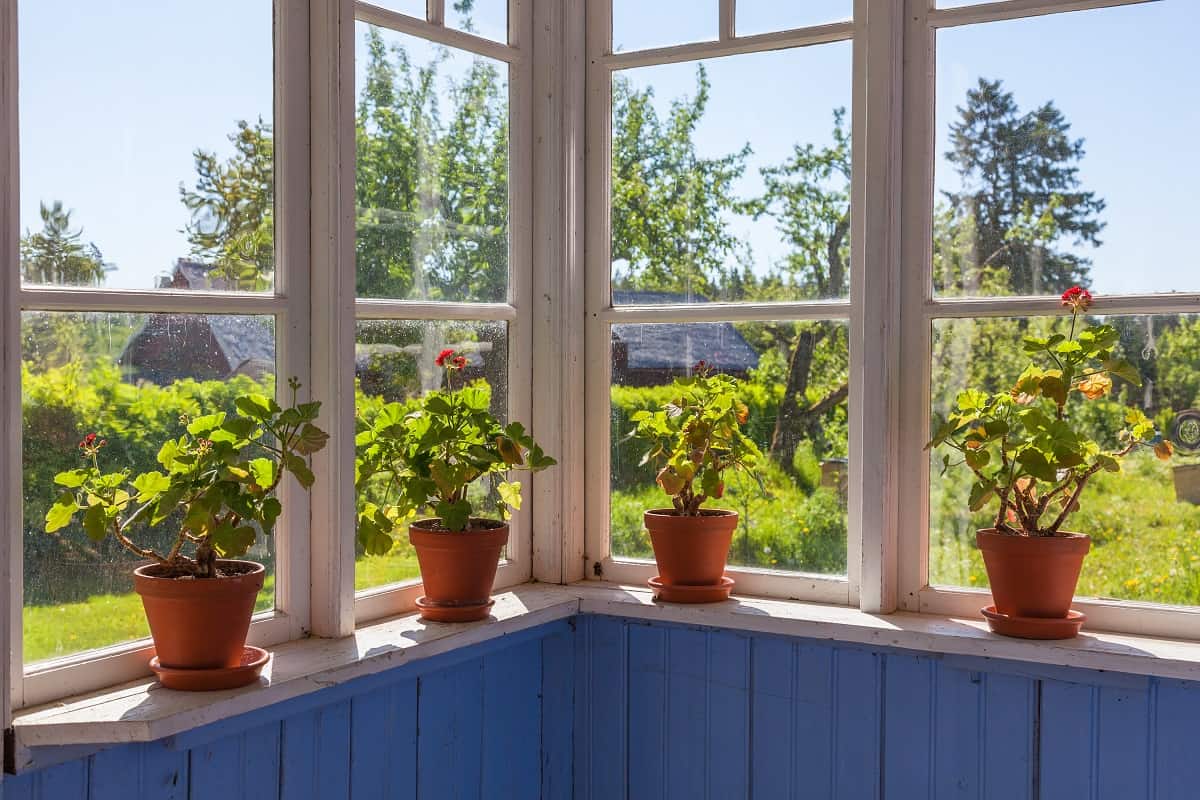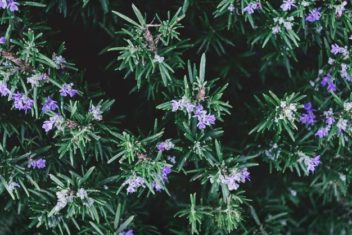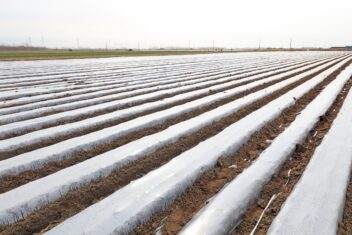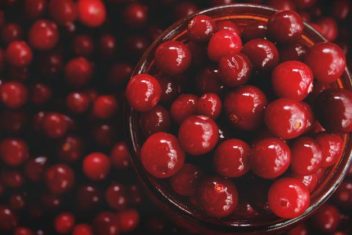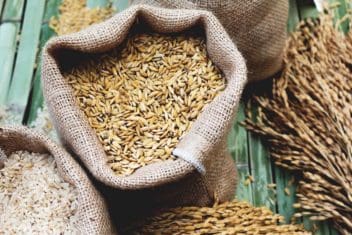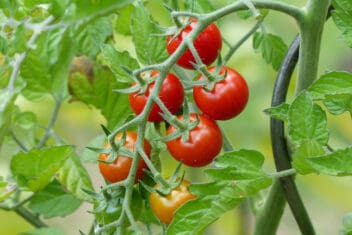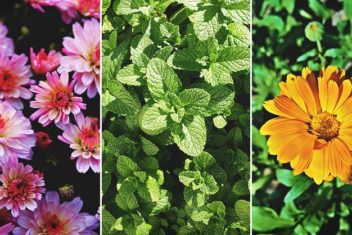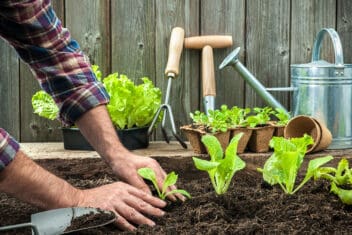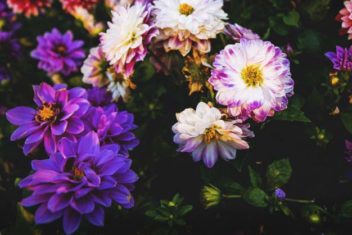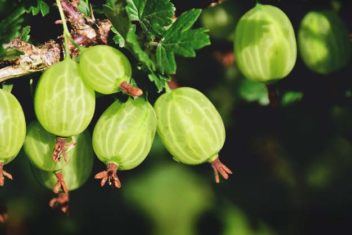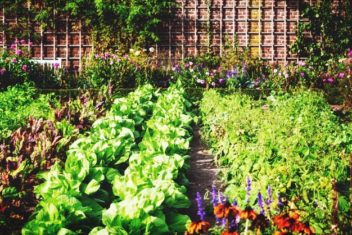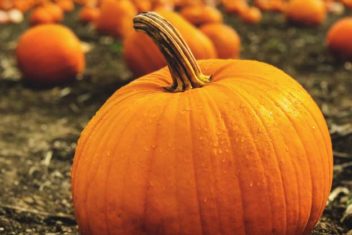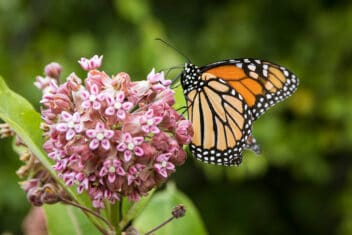Landscaping doesn’t have to stop at your front door. All that underutilized real estate on your tabletops, windowsills, counters, chests, floors, desks, and more can become useful indoor plant growing space. Also, by bringing plants indoors, you can add natural beauty to your home.
With some good planning, careful plant selection, and proper care your homestead landscape can extend through your kitchen, bathroom, office, bedroom, basement, and beyond! Let’s dig into the details you need to know to plantscape all of your indoor areas.
About Indoor Landscaping
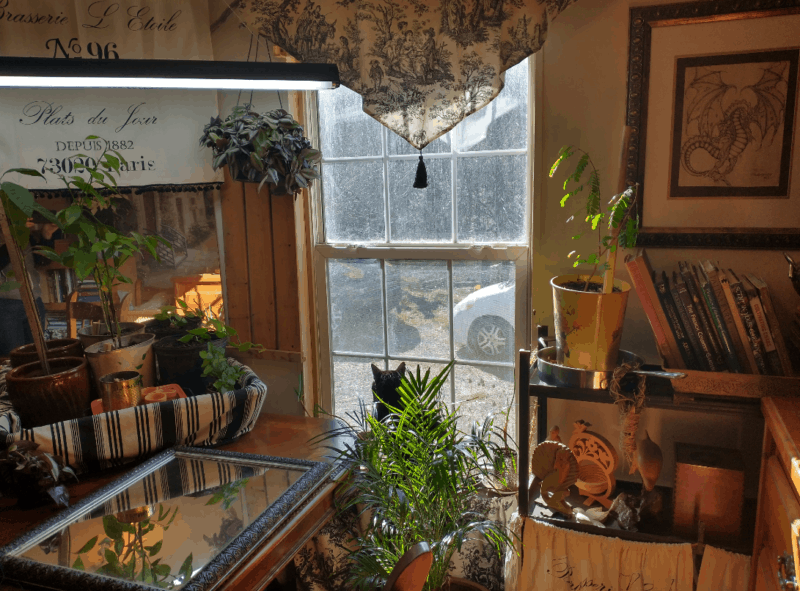
Indoor landscaping has a lot of similarities to outdoor landscaping. All the basic stuff like the right plant/right place, appropriate plant care in terms of watering, fertilizing, dividing, transplanting, and other gardening skills still apply.
Yet there are also some key differences in how you approach designing and planting an indoor landscape. Here are some of the ways you can adapt outdoor gardening skills to an indoor landscape.
1. Soil
You won’t be worrying about amending the native soil indoors. You’ll be buying or making the perfect soil mixes for your plants.
For example, you’ll use an orchid mix for orchids, bonsai mix for bonsais, soilless potting mix for decorative plants, and potting mix with compost for most of your edible plants. When you start by choosing the right potting mix for your plants, you’ll be well on your way to successful indoor plantscaping.
Also, since most of the work of outdoor gardening is all about soil maintenance – indoor landscaping is actually a lot less work in this respect. Though, of course, buying multiple high-quality potting mixes is a pain in the wallet. Thankfully, you can make your own and cut costs if you want to.
2. Plant Containers
Unless you live in a rustic dirt floor cottage or have an attached greenhouse atrium, then you also won’t be fretting over whether to garden in the ground or raised beds. You’ll clearly be gardening in some type of container.
– Pot Depth
So, with indoor landscaping, you need to focus on selecting the right size and style pot for the plants you want to grow. In general, plants with deep taproots need deeper pots. Those with fibrous root systems need shallower, but wider pots.
– Pot Size
Pot size also relates to the plant size you are targeting. To keep potentially large plants (e.g. a citrus tree) small for longer, you need to use small pots to start. Then, only pot up to a larger size when your plant outgrows its original container.
Plant sellers should be able to tell you what size pot to start with and how frequently you need to pot up for good plant health. Or you can refer to container gardening plant guides for more information.
3. Container Drainage
You’ll also need to select containers that won’t drain water all over your furniture or floors every time you get a little heavy-handed on the pouring. Luckily, there are some easy options for this.
– Wicking Pots

Wicking or self-watering pots hold water in a reservoir below the plant container. Then they use wicks inside the soil and root area to draw water up before the soil dries. As long as you keep that reservoir filled, these work great indoors.
The downside of these wicking pots is that they are typically plastic and aren’t always as aesthetically pleasing as pottery pots. However, you can make your own wicking pots with prettier containers to overcome that problem.
– Pots with Drainage Trays
Pots with built-in or coordinated drainage trays also work well. Though shallow trays can easily overflow if you water too quickly or have fast-draining potting soil. So you’ll need to water slowly to avoid excess drainage.
– Drainage Tubs
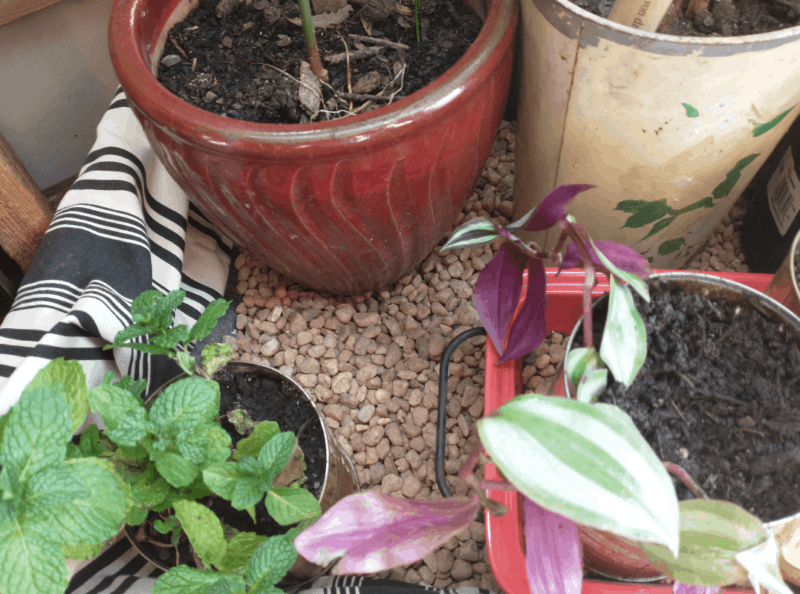
Another option is to use whatever pot you prefer but set it inside of a shallow tub. This is my personal favorite route. I use inexpensive rubber tubs lined with a layer of pea gravel to catch runoff water.
The tubs aren’t attractive. So, I wrap them in fabric or build a frame to hide them. Another bonus of this method is that the wet pea gravel adds additional humidity around tropical and subtropical plants.
4. Watering
While we’re talking about drainage, let’s also talk about watering. Indoors, you must provide 100% of a plant’s water needs. If you have 20-100 plants spread around your indoor landscape, without a good watering plan, you could spend lots of time carting water to your thirsty plants.
Fortunately, there are some easy things you can do to make interior watering less of a chore. Here are some ideas.
- Locate thirsty plants close to your water sources
- Group plants with heavy watering needs together so you can water them all at once
- Use automated indoor drip watering devices
- Use self-watering stakes with refillable water bottles
- Put several plants in one large self-watering container rather than using small individual pots
5. Fertilizing
In an outdoor garden, often additions of compost and mulch, coupled with cover crops and crop rotation, can maintain soil fertility. Indoors though, since you are growing in containers, you will need to use custom fertilizers to maintain healthy plants.
This is probably the trickiest part of indoor gardening. However, with good research and trial and error, you can find fertilizing solutions that work well for your indoor landscapes. Here are some options to consider.
– Synthetic Fertilizer
Synthetic fertilizers are generally the easiest and cheapest to use indoors and for container plants. They come in slow-release, plant-specific formulas that require little work to use. For example, you can buy a formula that’s perfect for citrus plants, flowering plants, or vegetables.
You can get fertilizer in capsules, granulated mixes, and easy to insert slow-release stakes. Many of these only need to be applied once every 6 months so that makes fertilizing a lot less work.
The downside of synthetic fertilizers is…well, they’re chemical-based and lots of us prefer more natural solutions. Also, you can build up salt accumulations in potting soil that can lead to poor plant health. So, periodically, you’ll need to heavily water your plants to leach out those excess salts.
– Organic Fertilizers
Organic fertilizers are trickier to use than synthetics in houseplants.
Organic liquid fertilizers tend to be safest for potted plants and most effective. However, you have to apply more frequently which can add up to extra work.
Granular formulas, by contrast, have to be applied to the soil. In small pots with limited soil, there’s a risk that they can burn plant roots. Also, since there’s not always a lot of beneficial soil life in potting soil to make organic nutrients accessible, they don’t work as effectively as they do in outdoor gardens.
Personally, I use weekly applications of vermicompost tea and top dressings of compost as my fertilizer source for most plants. Also, you can mix compost tea in with your water for self-watering devices.
Just make sure to drain the compost tea through a 400-micron filter bag before putting in automatic watering systems. Otherwise, they might get clogged by the tea.
Reading an Indoor Landscape
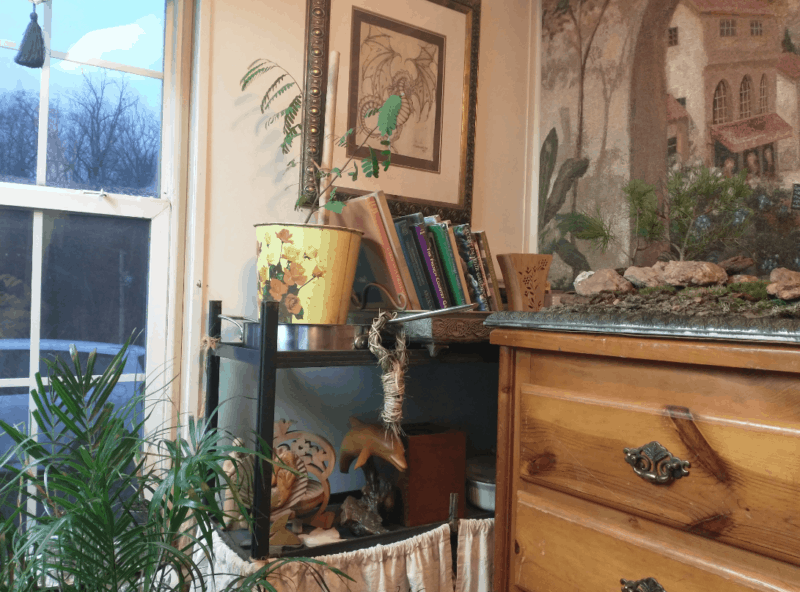
Besides adjusting the basic care elements of an indoor landscape, you also need to make sure you understand the environmental conditions inside your home. To do this, you need to “read” the interior just like you do your landscape outside.
Here are some examples of what consider.
1. Microclimates
Just like outdoors, your home is full of microclimates that can be utilized to provide ideal care for a broad range of plants. For example, Mediterranean plants accustomed to dry hot or cold wind conditions may do better near your air vents since that will also help keep them drier.
Tropical plants may prefer the south side of your house where sun exposure keeps them warmer or your home office if you keep it extra warm during the day. They may also love spending time in a room with higher humidity such as your sunny bathroom or near your kitchen sink.
By identifying the areas of your house that are drafty, extra warm, more humid, drier, etc. you can harness or avoid those conditions to keep your plants extra happy indoors.
2. Light

All plants need light for photosynthesis. So, you’ll definitely need to understand the light conditions in your house, throughout the year. Free light meter phone apps can help you figure that out.
However, the great thing about indoor landscaping, versus outdoor landscaping, is that you can increase your indoor light without much trouble.
For seed starting, you typically need to hang daylight-rated light fixtures about 4-inches above pots. However, for mature plants that have good leaf growth and thrive in low to medium light conditions, lights can be positioned 1-3-feet from the plant leaves and still be effective.
So, if the light from your window isn’t quite strong enough, you can couple it with electric daylight rated fixtures to round out the coverage. In fact, there are so many amazing, low-cost plant lighting solutions now, you can even grow plants with zero natural light.
– Light Types
Clip-on gooseneck type lamp with multiple arms can be used to direct light to individual plants. Long, narrow light bars can span 4-8-feet or more if you want to create a plant wall. Smaller lights can be used on bookcases and in cubbies.
– Light Safety
All you need to do is make sure you have a plug nearby. Of course, you also need to make sure you don’t accidentally water your socket or plug. So, keep those away from the watering zone or protect them with waterproof covers.
Also, keep in mind, plants need some dark time. Turning out lights at night is as essential as turning them on during the day. Timers come in handy if you want more control over your plant lighting with less work.
3. Temperature
Also, note that many plants perform best when nighttime temperatures are cooler than daytime temperatures. Generally, a 20° drop is considered ideal.
Unfortunately, you won’t get that in most home indoor landscapes. As such, not all outdoor plants will grow well indoors even if you get the lighting and daytime temperatures right.
Tropical and subtropical plants tend to be better suited to narrower differences between day and night temperatures. Still, if you also want to grow non-tropical plants indoors, you can do things to make areas around plants cooler at night.
For example, cracking a nearby window to let in more outdoor air can help. Closing room vents when the heater is on is another option. Using lamps that emit some extra heat by day and turning them off at night can also create a wider temperature range from day to night.
4. Humidity
Humidity is another factor you’ll need to address to get ideal results in growing plants indoors.
Tropical and subtropical plants, for example, may only flower at relative humidity above 60%. Since most of our homes range between 30-60% relative humidity, you may need to increase humidity around your plants to promote flowering.
Here are some simple ideas to make small increases in humidity.
- Group moisture-loving plants close together so they trap humid air between them
- Put plants inside a container lined with moist rocks such as pea gravel or polished river rock
- Keep a full bowl of water next to your plants
If you need to make big humidity adjustments, though, you’ll have to put a humidifier near your plants. Warm mist type humidifiers seem to work best for humidity loving indoor plants.
Plant Selection

As you can see, there are lots of things you can do to create the ideal conditions for plants in your home. However, to make your job easier, you really have to pick plants that love growing indoors without needing all sorts of special treatment.
There are lots of lists of great houseplants out there that you can reference. However, since my particular experience is in growing edible plants indoors, here are my suggestions for good edible options to try at home.
1. Indoor Edibles: High Light
- Avocado
- Basil
- Calamondin Orange
- Cardamom
- Fenugreek
- Ginger
- Limes – Key and Kaffir
- Lemongrass
- Meyer Lemon
- Onions (bunching type)
- Peas (dwarf, bush-style)
- Peppers
- Pineapple
- Strawberries
- Tamarind
- Thyme
- Tomatoes
- Wheatgrass
2. Indoor Edibles: Medium Light
- Bay
- Celery (leaf or smallage)
- Cilantro
- Cinnamon
- Coffee
- Galangal
- Lettuce (come and cut types)
- Mints
- Parsley
- Peppercorns
- Spinach
- Tea
- Turmeric
- Vanilla
3. Indoor Edibles: Low Light
- Wasabi
Many of these plants will perform better if you also take them outdoors during the warmer months to give them strong summer light.
Also note, some of these plants get quite large. For example, cardamom will be 8-feet tall and 3-4-feet wide before it produces spice. So even though you can absolutely grow it indoors, it’s not going to be an ideal plant for small spaces.
Before you buy or propagate plants for indoor use, research their container needs and mature space needs so you don’t end up losing half your living room to an oversized plant.
Indoor Landscaping
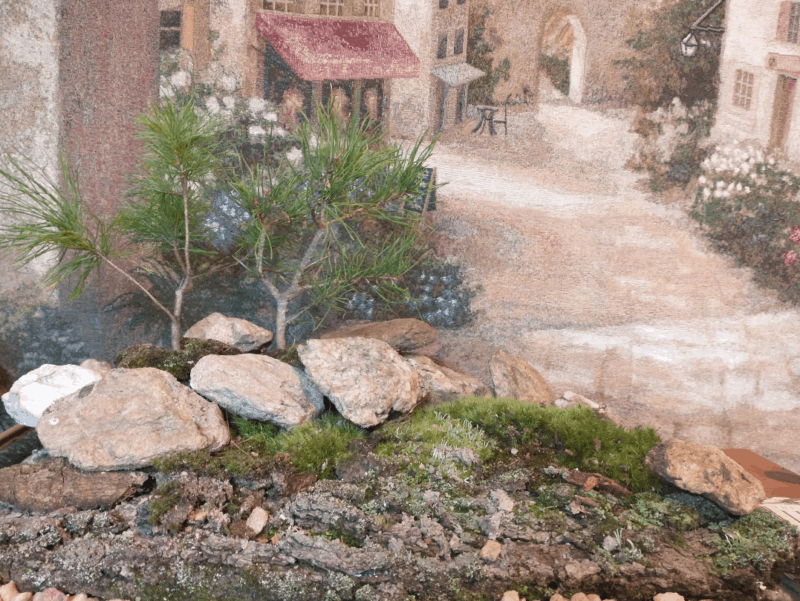
There are a few more things you’ll have to keep in mind when planning your indoor landscape.
1. Plant Problems
Normally when I talk about plant problems, I mean pests and pathogens. When you grow indoors, though, you have fewer of those to deal with. Most can be addressed with soapy water or some fresh potting mix and disease-free plants.
However, the kind of problems I mean now are things like – what if a plant tips over and soil goes all over the carpet? Or how about if your cat eats a poisonous plant part?
Indoors – you have furnishings, pets, and people to protect. So, you’ll need to think through whether each plant or the location you keep it in will be safe given the risks in your home.
Here are some of the things I do to protect my home from problem plants.
- Only pet-safe plants go on tabletops or low shelves
- All plants sit on cleanable surfaces in case of soil spills or water splashes
- Those tubs I mentioned earlier are employed to prevent spills
- Around high humidity plants, walls are painted with mold preventing products
2. Decorative Plantscaping
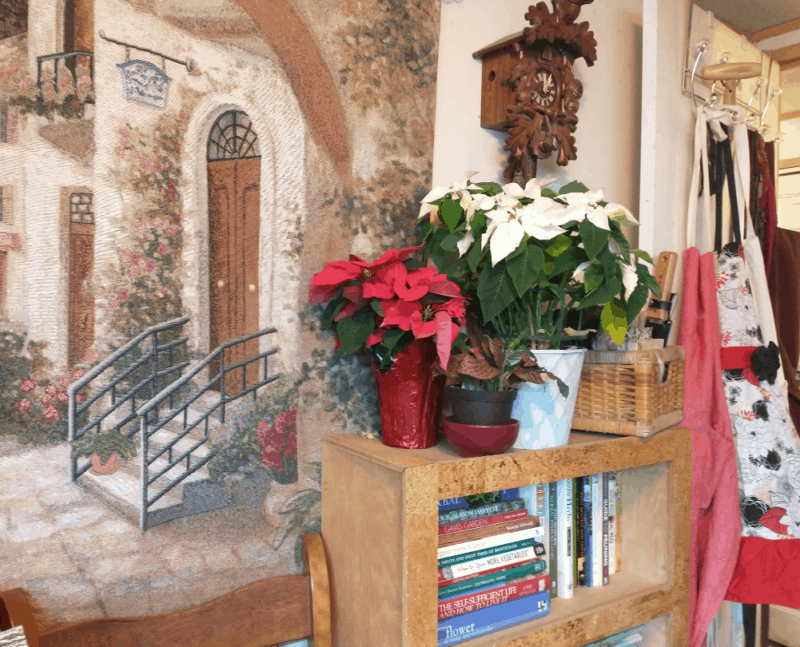
Now, the last thing I want to tell you about plantscaping is that it’s not just about putting a plant on a windowsill or on a table. It’s about actively planning your indoor landscape to make your home more beautiful, just like outdoor landscaping is.
So, spend some time to think about what plant shapes, sizes, and leaf types appeal to you. Consider some topiaries.
Make lighting choices that match your décor. Upgrade to pretty pots in high traffic areas. Get creative with your layout. Add in some seasonal interest.
How about using flowering hydrangeas in spring that you can pot outside later? Force bulbs indoors or make a moss scape in winter for seasonal beauty. Incorporate inexpensive mums or poinsettias into your plant scapes in fall and winter.
You know…use all those skills you learned making a potager or ornamental farm as part of your interior landscape too. Have fun and take pleasure living your plantscaped home!
